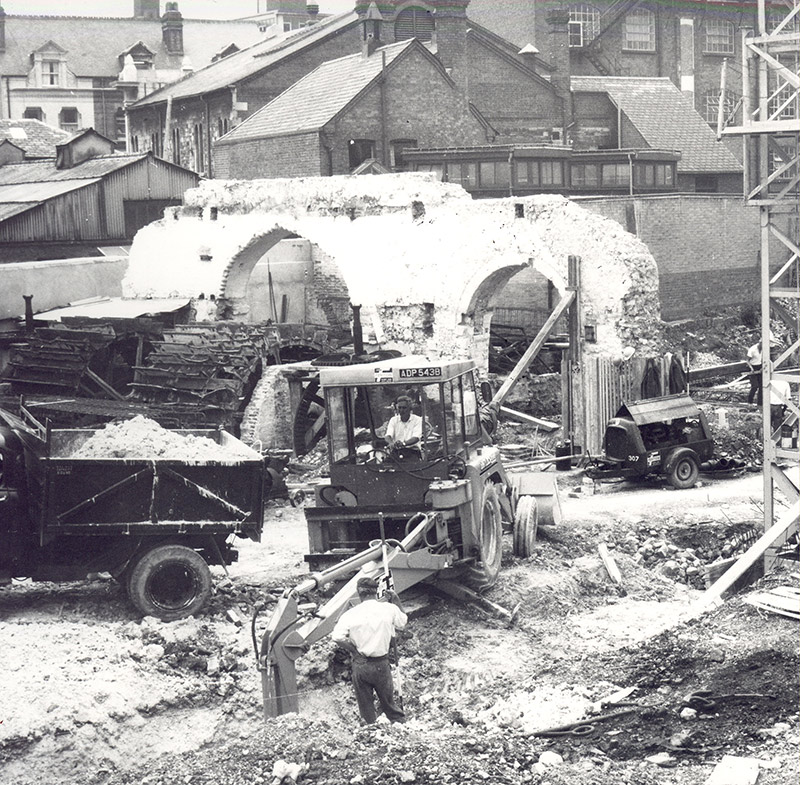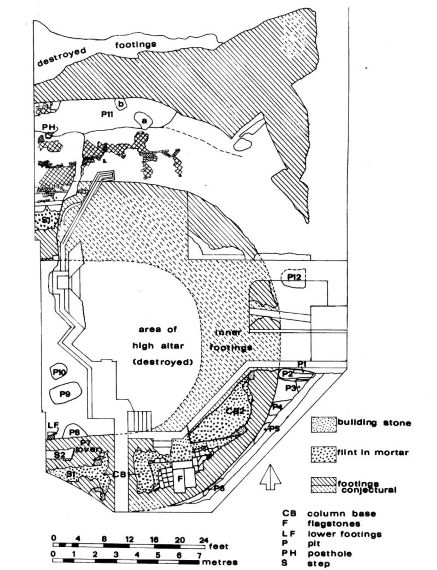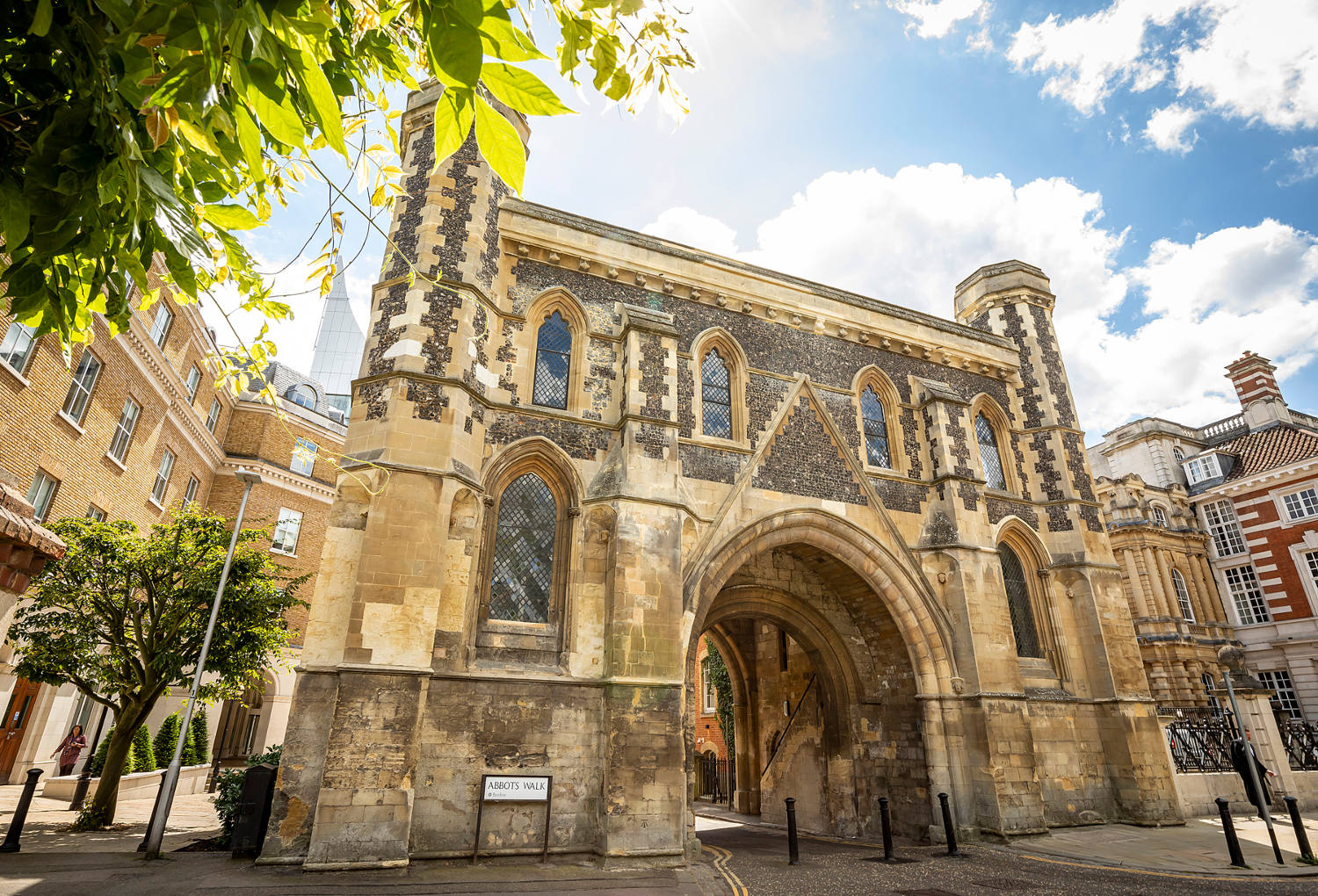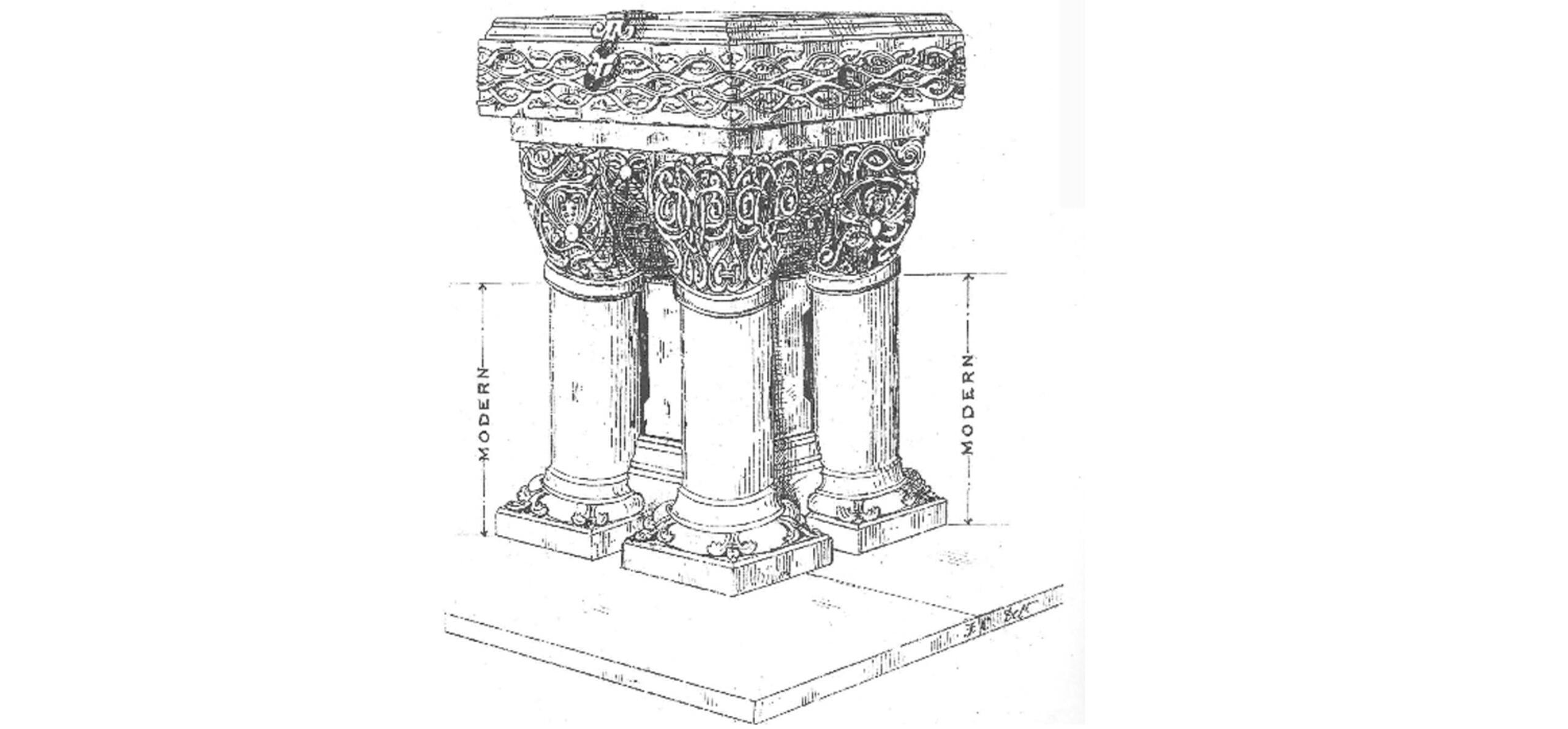This year, 2021, the Berkshire Archaeological Society is celebrating 150 years since it was founded in 1871. As part of its celebrations the Society has produced an exhibition showing its contribution to archaeology in the Berkshire area during this time. You can find out more about exhibition at the end of this blog!
Berkshire Archeological Society has a great many papers focused on Reading Abbey, exploring the architecture, tiles and history of the Abbey.
To honour 900 years of Reading Abbey, we have collected together some of the papers the Society has published about the Abbey below. You can view many of the articles online and copies of these journals are kept in the local studies section at Reading Central Library.
Early years of the Society
In the early years, the Society's title varied, as did the number of papers produced.
In 1881, Fred Albury, a Fellow of the Institute of British Architects, produced an informative paper entitled Reading Abbey, its History and Architecture, which he read before the society. At that time, the Society was known as The Berkshire Archaeological and Architectural Society.
Although Fred Albury was a professional architect, he seems to have been an enthusiastic archaeologist. By his own admission, he spent around twenty years excavating the ruins of the Abbey. He excavated remaining foundations and basements of structures, and was impressed by the ornate carvings on some of the stonework, sketching many of the remains. He produced a plan based on his investigations.

The Abbey Mill Arch was retained as later buildings were demolished in 1964
Reading Abbey in the Berkshire Archeology Journal
Berkshire Archaeology Journal Vol. 41, 1937
In that publication, Ernest W. Dormer published an article on ‘The stream called the Holy Brook at Reading’. He describes how it was a branch of the River Kennet, flowing from a point near Theale, and twisting its way towards Reading. Later on its route, after the Coley area, it took a straight course towards the site of the Abbey. Dormer believed that it had been ‘canalised’ to allow use of the water for various purposes in the Abbey, including providing water for the Abbey Mill, and for washing and cooking.
Cecil Slade
Cecil Slade was an academic archaeologist at Reading University and was a member of the Berkshire Archaeological Society for fifty years and president of the society from 1966 to 2001. He also participated in the formation of the Friends of Reading Abbey.
Slade supervised, and took an active part in, excavations at the Abbey site from 1964 – 1967 and from 1971 – 1974. These activities were reported in several volumes of the Berkshire Archaeological Journal, and the finds were deposited at Reading Museum.
Berkshire Archaeological Journal Vol. 64
Cecil Slade presented a report on paving tiles of Reading Abbey, having analysed not only the tiles that had been found on his 1964-67 excavations, but also many tiles deposited in Reading Museum from previous excavations. The earlier tiles may have been the work of peripatetic tilers (we now have evidence of tile kilns in medieval Reading at Silver Street), but during the late thirteenth century and fourteenth century a tilery had been established at Penn, Buckinghamshire. He discusses the different techniques of tile making, and also includes illustrations of some examples found.
Berkshire Archaeological Journal Vol. 66
The areas of the 1964-67 excavations covered the remains of the Abbey Mill, the cloister and a refectory wall. The justification for the excavations was that there was a requirement for the area to be redeveloped. This meant that existing ‘modern’ buildings over the sites were to be removed, and newer ones built over the cleared sites.
Access for archaeological investigation was limited, as demolition was quickly followed by rebuilding. However, a full report was produced in Berkshire Archaeological Journal volume 66 of everything that was accessible.
Berkshire Archaeological Journal Vol. 68
The excavations carried out from 1971-1973 was in an area outside the walls of Reading Gaol, with the objective of revealing the area of the high altar of the Abbey. Nothing was visible above ground, but it was possible to produce a plan of the east end of the 12th century church for the first time.

Reading Abbey Church: Plan of the Chancel and the Ambulatories. Later building indicated by fine lines. (Cecil Slade)
Exhibition - Berkshire Archaeological Society, 150 years of archaeology in Berkshire
The 150th anniversary exhibition celebrates the development of the Berkshire Archaeological Society and archaeology in Berkshire and includes some sites the Society has worked on.
From its beginnings as a gentleman's club, over the last 150 years the Society has:
- run the early systems to record heritage and archaeology in Berkshire – from 1910 until Reading Museum took over that role in 1945
- coordinated archaeological fieldwork across Berkshire from 1945 until 1983 when the Berkshire County Council took over the role
- played a significant part in the creation of the Berkshire Archaeological Unit and Wessex Archaeology in the 1970s
- carried out and supported the excavations on Reading Abbey from 1960 to 1986.
Today, the Society's work is open to all, exploring the archaeology of the county with cutting edge technology.
The exhibition opened in the Maidenhead Heritage Centre on 22nd June, where it will remain on display until the 10th July 2021. From the 14th to the 25th July, the exhibition will then be available to be enjoyed at West Berkshire Museum. Finally it will be on display in the Berkshire Record Office in October 2021.
Exhibition dates:
- The Maidenhead Heritage Centre, 22nd June - 10th July 2021
- West Berkshire Museum, 14th – 25th July 2021
- Berkshire Record Office, 18th-30th October 2021

The Abbey Gateway was the Society's Headquarters from 1892 to 1919





